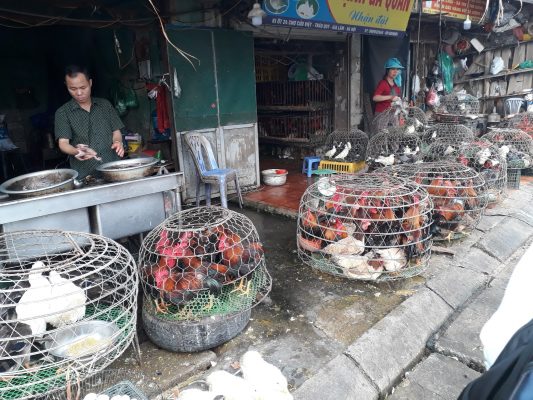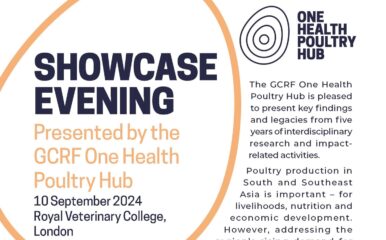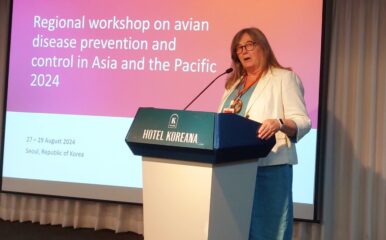
High-risk poultry trading practices identified for avian influenza
Published on 02/09/2019

Giel Ton
View this page in:
VietnameseHub scientists have published research showing that the transmission of avian influenza viruses in Vietnam is influenced by the structure of live poultry trading networks.
Their work – undertaken under a project in the Zoonoses and Emerging Livestock Systems (ZELS) programme and which will be taken forward in the One Health Poultry Hub – has identified the groups that are most likely to employ trade practices that impact the risk of infection in chickens.
It could lead to better informed vaccination strategies in poultry populations.
The paper, ‘Poultry trading behaviours in Vietnamese live bird markets as risk factors for avian influenza infection in chickens’, was published in Transboundary and Emerging Diseases and it describes how vendors’ positions in the trading network impacted their odds of having avian influenza infected birds. Chickens that retailers bought from middlemen had an increased chance of being infected compared to those that were bought directly from large farms.
Middlemen suppliers could provide a risk factor for influenza virus infection due to their tendency to travel between live bird markets and mix poultry stocks. Likewise, retailers could be associated with higher odds of infection because they may purchase birds that have ‘changed hands’ multiple times, increasing the time birds spent within the trade network and facilitating the mixing of birds from different sources.
The ZELS study also established that viruses from the same market were genetically more similar than those from other markets or provinces, and identified two strains of influenza (H5N6 and H9N2) circulating in the markets that were sampled. The co-circulation of influenza strains at live bird markets presents more opportunities for strains to infect the same bird simultaneously and swap genetic material, which could result in an influenza strain that is capable of infecting humans.
Co-author of the paper Professor Munir Iqbal, leader of the Avian Influenza Group at Pirbright and a Poultry Hub researcher, said: “Live bird markets could allow highly pathogenic avian influenza H5 strains, which cause severe disease in poultry, to mix with strains that we have shown to have the genetic potential to infect humans, such as H9N2.
“Given this, it is important for us to establish factors in these markets that increase the likelihood of strains mixing, and our study has allowed us to identify high risk groups that are more likely to perpetuate the spread of avian influenza.”
This understanding of the dynamics and practices of live bird markets in Vietnam could aid vaccination strategies during outbreaks. H5 strains are already vaccinated against as part of outbreak response measures and discretionary use of routine H5 vaccines is used in some commercial farms.
However, high-risk groups identified in this study could also be targeted, particularly farms that are highly connected to trade networks where high‐risk traders operate. This could help in preventing the co-circulation of influenza strains and lower the risk of mutations occurring that could enhance virulence and transmission of viruses to humans.
Another co-author of the paper, Dr Guillaume Fournié of RVC, is also a partner in the One Health Poultry Hub, with the critical role of lead Research Coordinator.
Other co-authors are from the National Centre for Veterinary Diagnostics in Vietnam and Oxford University Clinical Research Unit (OUCRU) in Vietnam.


